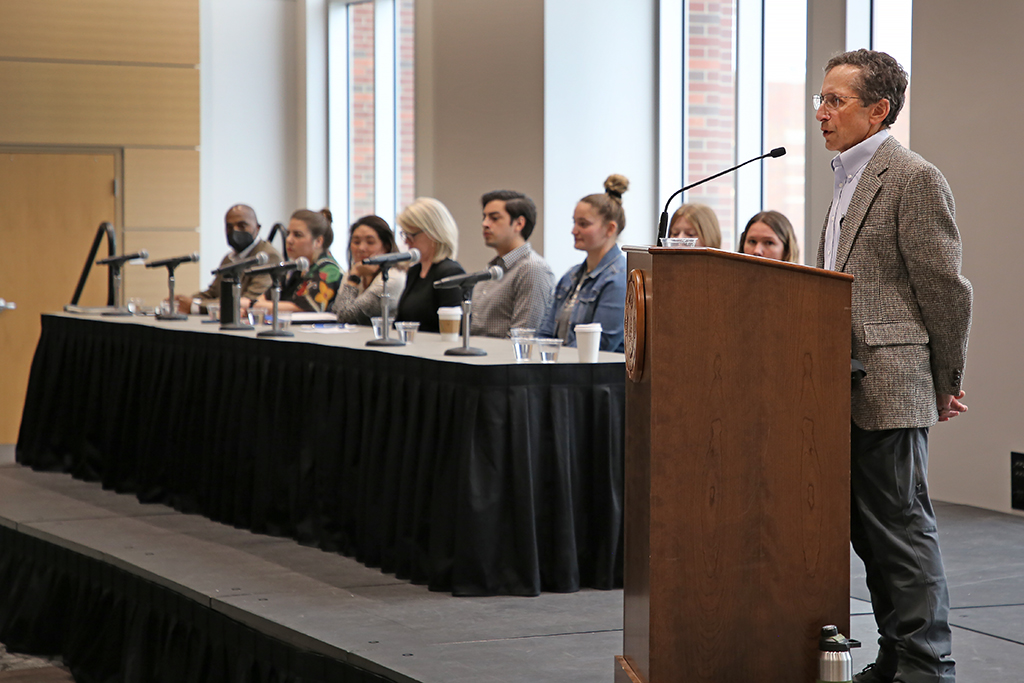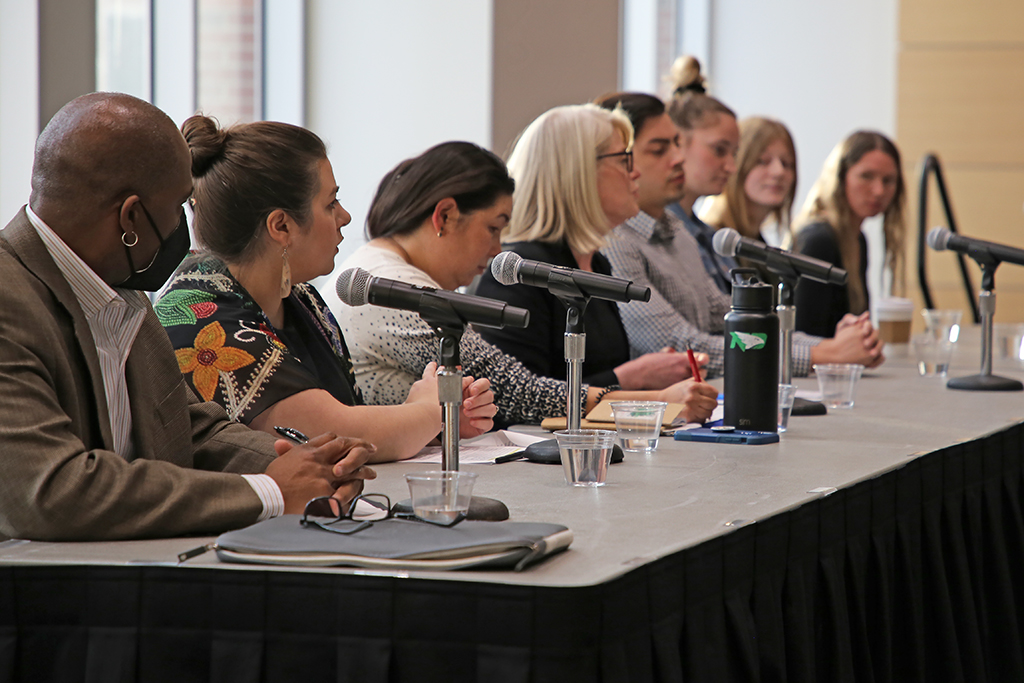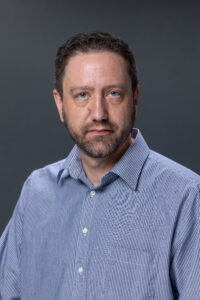On systemic racism: ‘Can we talk about this?’
UND panel discusses role of education in informing students about challenging topic

How do we speak with students about systemic racism? At what age should they be introduced to the concept? What does systemic racism even mean?
These were questions that a group of UND faculty members and undergraduate students grappled with at a panel discussion on Nov. 28 in a Memorial Union ballroom. It was the first such panel discussion of its kind on campus, and its genesis stemmed from the inaugural DEI conference, which was held in early October.
At that conference, educators attempted a similar discussion but found it necessary to hold a dedicated panel event, to provide attendees both in person and online with a forum to discuss their ideas.
For Robert Newman, biology professor and moderator of the event, that meant getting attendees to come away with a better sense of history and how it impacts students today. Newman said people can feel threatened when being asked to discuss a concept such as systemic racism, and the panel discussion was an opportunity to speak about a divisive topic in a professional manner.
“Nobody should see it as a threat,” said Newman, speaking shortly before the panel convened. “They should see it as a foundation for figuring out how to do things differently, and maybe how to remedy some of the problems that started in the past and are still with us. I think it’s an important part of education.”
On the panel were Tamba-Kuii Bailey, special assistant to the president for diversity & inclusion; Beth Klemetsrud, assistant professor of chemical engineering; Casey Ozaki, chair of the department of education, health & behavior; Anne Kelsch, director of faculty development for the Teaching Transformation and Development Academy; and student panelists Macie Brekke, Nathan Sullivan, Karsyn Hager and Eve Goldstein.
Bailey said he defines systemic racism as policies, rules or laws that only benefit people in one group — the group of those who identify as white — while simultaneously doing the opposite for people in other groups. And unlike the overtly racist policies and acts of the Jim Crow era beginning in the late 1870s, today’s version is often not easy to see.
“You don’t see it,” Bailey said. “We don’t see air. For fish and other things swimming in water, they don’t see water, it’s their environment. So, our environment then is the systemic enforcement of these things.”
Klemetsrud said discussing systemic racism is abstract and can make people uncomfortable. However, having an uncomfortable discussion is necessary to feeling empathy for a group. By way of example, she mentioned the generational trauma felt by some members of the Indigenous community who attended residential schools, which essentially were forced assimilation camps designed to westernize Native Americans.
Today on campus, the physical manifestation of systemic racism is playing out, as the University works to repatriate Indigenous artifacts and human remains known as ancestors, Klemetsrud said.
“This is what happens when a majority white community feels like they have ownership over a Native identity,” she said.

Kelsch said discussions about systemic racism don’t require one to take on a feeling of guilt or responsibility for the historic past. Those discussions, rather, are meant to show students that they live in an imperfect society, which is a necessary step toward addressing those imperfections.
Ozaki said she believes there are developmentally appropriate methods to begin the conversation in K-12 education. Discussing it there will serve to counteract the resistance some students express to the topic in college classrooms, she said.
In particular, Ozaki mentioned the PBS Kids history-based television show “Xavier Riddle and the Secret Museum,” as but one way to begin having conversations about difference with young children. The show highlights the lives of famous people throughout history, and frequently the lives of people of color. An episode of the show featured the life of Mahatma Gandhi, and his method of nonviolent resistance that ended up seeing India become independent from British rule. She said her son watches the show.
“It was an opportunity to have a conversation about how we all don’t have the same lives,” Ozaki said.
Karsyn Hager, a panelist and UND senior, said that when she first arrived at UND, she didn’t have the store of knowledge about topics such as systemic racism, and that led her to feeling overwhelmed. She said educational efforts toward that end should start earlier in one’s education.
“Growing up, we never really learned about any of that, and I think that it does need to start earlier,” Hager said.
Eve Goldstein, a panelist and UND junior, echoed that sentiment by saying racism was a subject she seldom encountered until late in high school. Arriving at UND, with its diverse campus, created the forum to talk about concepts that weren’t part of her conceptual vocabulary.
“Coming to UND and finally being exposed to so many different backgrounds, races and ethnicities, that brought a whole new perspective,” Goldstein said.



